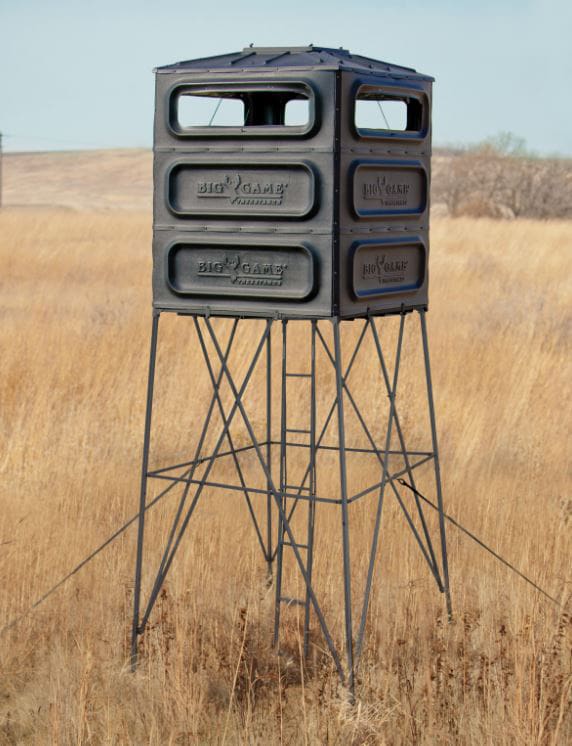How Shed Antlers Can Help You Next Year
The Search for Shed Antlers and the Stories They Tell
It’s that time of the year again. Shed hunting season may have made its arrival unnoticed to some, but it hasn’t escaped our attention. Far from it. When you’re a deer hunter in February and you’re already looking forward to opening day of archery season, it’s usually the perfect shot in the arm to limp us along and fuel our passion. Looking for shed antlers can be a very time-consuming and frustrating hobby, but it can also be an extremely fun and addicting one. Fortunately, shed hunting has other benefits beyond the possible promise of finding a nice shed antler for your collection in the living room. You can also learn a lot about the woods and become a better hunter in the process. We’ll look at a few ways you can improve in the shed hunting 2017 season.
But first, what is it about shed antlers that captivate us so much? After all, they’re really just bones at the end of the day. There seems to be something special about their shape and texture that capture our imagination. It blows our minds that something so beautiful could be formed randomly on the head of an animal through the deer antler cycle and then be simply discarded one day. Maybe it’s because they can be so hard to find sometimes; rodents and other people love them. Their scarcity makes them valuable to us. Private landowners who have had a history with a certain buck over a few years tend to get really obsessive over finding the matching set every year. It’s no wonder why they love to collect them. Yet those who primarily use public hunting land and have never seen a buck or have any history of the property are just as happy finding a shed. No matter what your circumstances, finding shed antlers is a lot of fun.
How Does Looking for Shed Antlers Help You?
But there’s more to shed hunting trips than actually finding antlers. A day in the field or woods is always a chance to learn something new. It doesn’t matter if you’re a brand new hunter or a seasoned veteran; there are always new things to learn. Here are a few ways that shed hunting can make you a better hunter before next year swings back around again.
First and foremost, hunting for shed antlers is basically just another way to do some post-season scouting. Without the fear of bumping deer, you can wander wherever your heart desires. Do you have an area you usually stay out of so you don’t bother the deer there? That spot is now fair game to look for shed antlers right now. The winter conditions also make it possible to explore some typically unreachable areas, such as swamps and bogs, which usually end up being great winter cover for whitetails. During your hike, take note of any prominent areas you’d like to keep in mind for next hunting season. For example, you might find a remote clearing the deer like to congregate in that you never knew was there. Or if you notice lots of deer trails converging on a single field access, you might want to hang your Guardian XL ladder stand there next summer. It’s big enough to easily handle two people, which is great for taking your child along.
Second, shed hunting can be a lot of work. On heavily pressured public lands, you might walk for hundreds of acres and never find a pair of whitetail deer antlers. The odds can be increased on private land where you can control the habitat and who accesses it at what times, but it’s still a lot of walking. This is good because it challenges your body to keep up with the rigors of navigating the woods. We have a tendency once deer season closes to relax at home instead of continuing to explore the forest. This makes it harder to get going again the next year when hunting season begins. If you continue that trend for several years, you’ll be in much worse shape than you should be. This is one way to reverse that trend.
Finally, spending time in the woods is the best way to become a better outdoors person. The more time you spend in it, the more you will learn about wild animals and their habits and habitats. When you learn more about your prey animal, it’s easier to hunt them because you know what they need and where they like to live out their lives. Finding deer sign and knowing how to interpret it is easier too. This really pays off when you’re carrying your tree stand in to hunt and need to make a quick decision. The Boss Lite is a great fixed position tree stand that you can use on those kinds of hunts.
How to Find Shed Antlers
While it’s true that shed hunting can be a lot of work, there are ways you can go about it more intelligently and successfully. Here are a few shed hunting tips for you to have a higher success rate this winter.
Before you head to any public property, make sure you know the shed hunting laws in your area. Most public lands allow you to collect shed antlers, but there are a few places that may not, such as scientific and natural areas or wildlife preserves. Luckily, the process of finding a shed is very simple (in theory). You just need to pick an area and walk around with a keen eye to the ground. Don’t forget to look up every once in a while though to scan the woods around you. If you focus on the ground too much, you might walk right by a shed laying only ten feet away.
Finding shed antlers consistently is all about timing and location. If you can hit the magical combination of the two, you shouldn’t have any problem finding at least a few antlers. If you miss one of these two, you might get lucky occasionally. But if you miss both, well, at least you’re learning more about the woods and becoming a better hunter, right?
Where to Find Deer Sheds
Start your search by focusing on location. Deer stay bedded for most of the day in the winter, which conserves their energy and keeps them from exposing their bodies to the weather. In very tough winter conditions, deer typically seek out bedding areas with thick thermal cover to protect them from icy cold winds. This cover is usually in the form of conifer plantations with plenty of low-growing branches (i.e., spruce is better than pine), dense young forest regeneration, or dense herbaceous areas (e.g., cattail swamps, switchgrass plantings, etc.). If you can find an area like that with a sunny southern exposure, you stand an excellent chance at finding some shed antlers. Field edges are another common bedding area and a great place to look for sheds. In fact, bedding areas are probably one of the best places to find shed antlers, period.
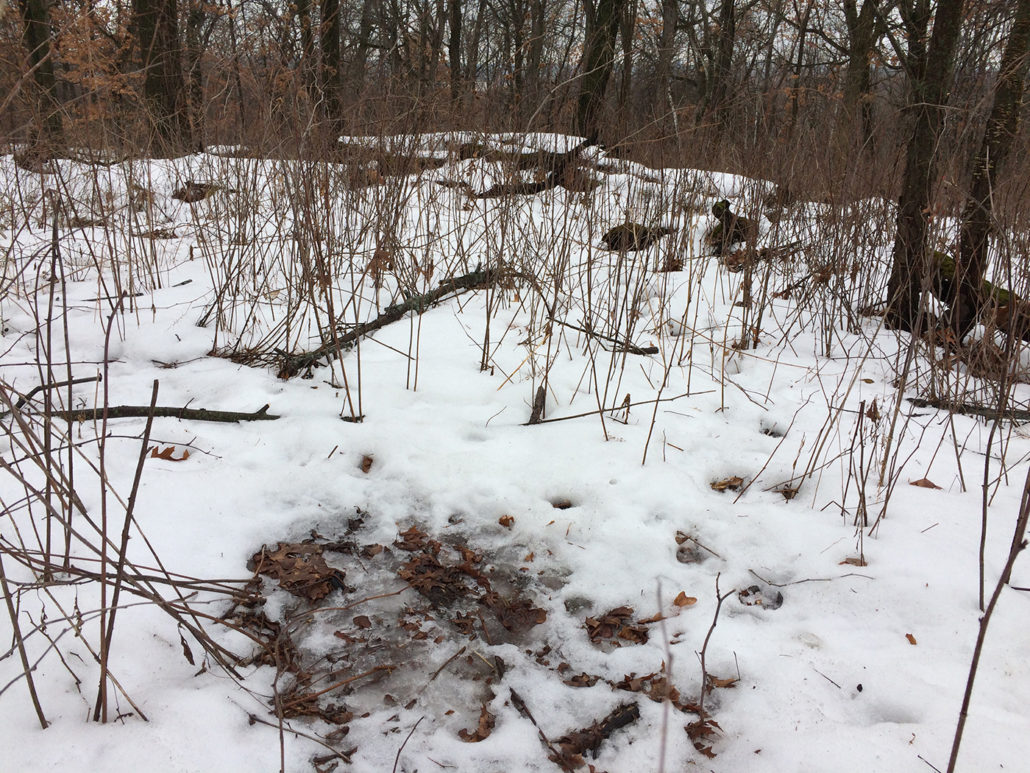
Of course, deer also spend a good chunk of their day feeding, which is why it’s one of the other best places to shed hunt. There likely won’t be many food plots available, unless you keep some uncut standing corn or beans for the deer. More likely, deer will feed on browse to get them through the winter. If there is a young forest regeneration area (i.e., recent clear-cut), there will be loads of young browse species for deer to feast on. Additionally, there will be lots of thick branch tangles to potentially pull antlers loose as they feed.
You will occasionally find a shed antler along a trail between a bedding area and feeding area, but there usually needs to be a cause for it. For example, when deer have to jump up and over a log, the landing force can sometimes rattle an antler loose. Pay special attention to obstacles along deer trails for that reason. But use trails more as a method to get from the bedding area to the feeding area and vice versa.
When to Shed Hunt
The second prong to the shed hunting approach is timing. Unfortunately, when to go shed hunting is a much trickier variable to peg down because it varies with your area of the country. Shed hunting in Minnesota, for example, will usually take place during a very different time than Georgia. It all depends on the local conditions and the environmental stresses that deer feel, which all influence when they drop their antlers. Across the country, prime shed hunting times will generally start around mid-January and continue through the end of February, though they can be much earlier or later than that. Because of that variability, the best time for shed hunting is whenever you can spare the time. If it overlaps with the ideal timeframe above, that’s even better.
The Real Purpose of Antler Hunting
Finding shed antlers definitely takes some hard work and determination. You might get lucky a few times, but more often than not, it just takes a lot of miles walked to find them. But even if you don’t find one, don’t get discouraged by it. The reality is that you won’t find them all that often. They’re kind of rare, remember? As we started the article with, the overall point of shed hunting is not to amass a crazy wall full of sheds. It’s to get outside and learn a new thing or two about the world we miss as hunters once hunting season closes. We can always improve the world we miss as hunters once hunting season closes. We can always improve the way we hunt in some way or another. Shed hunting is the solution you’re looking for.

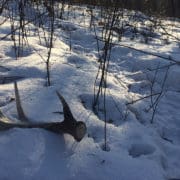
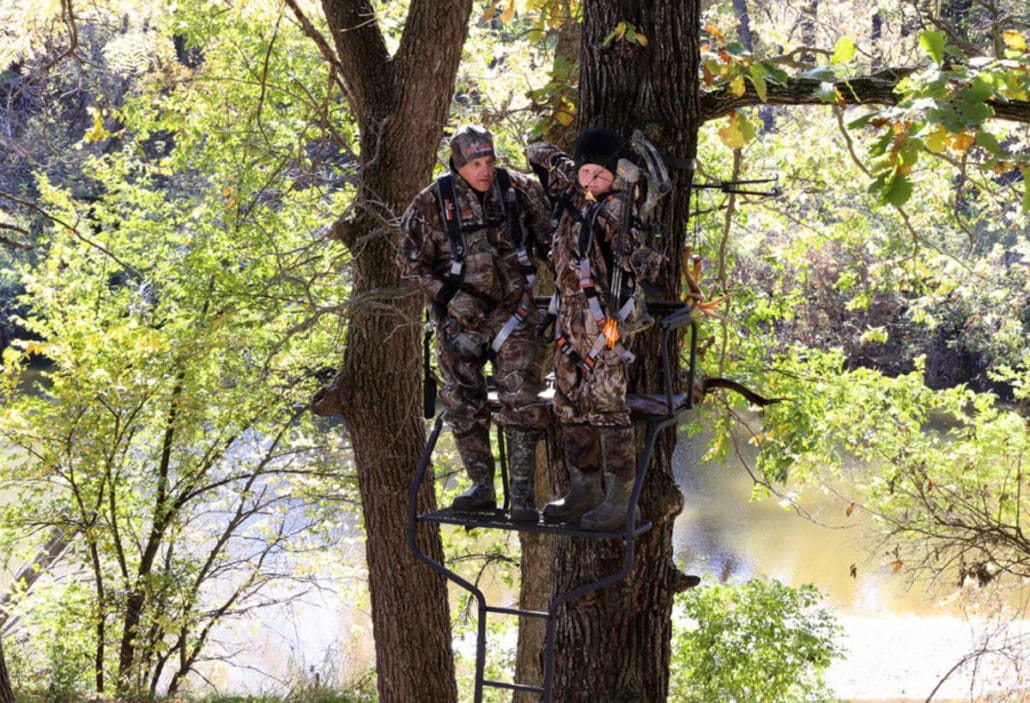
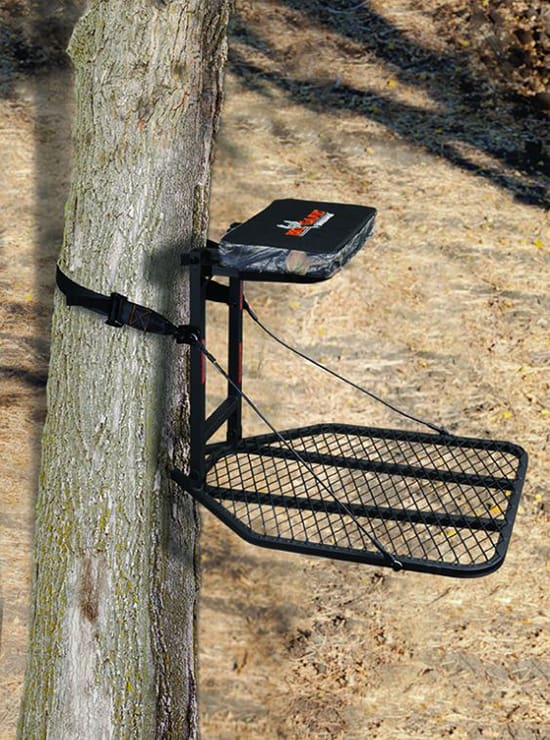
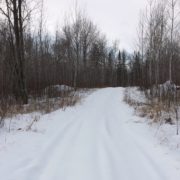
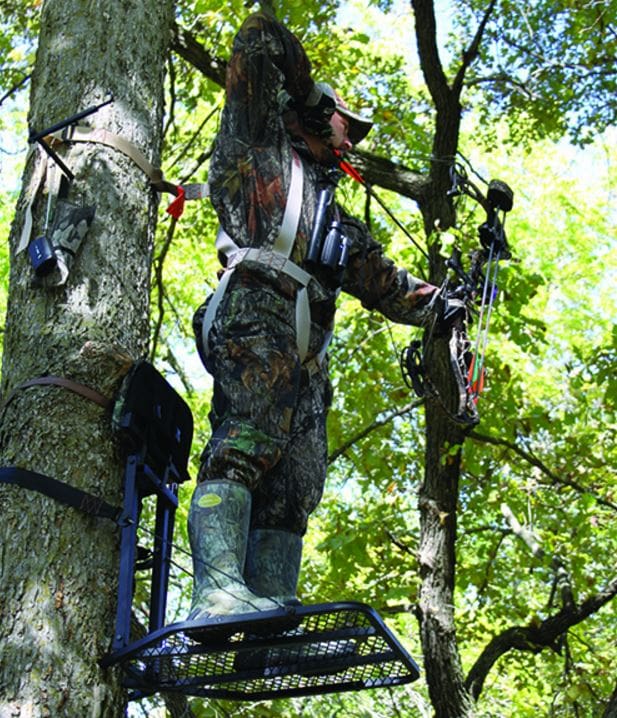
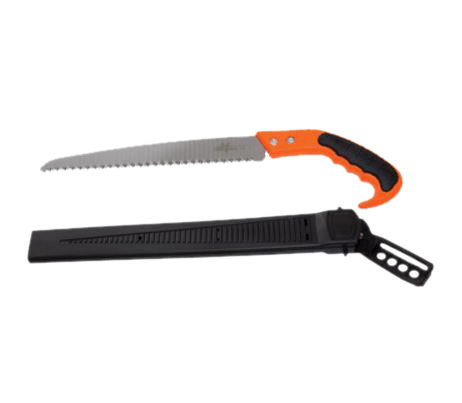
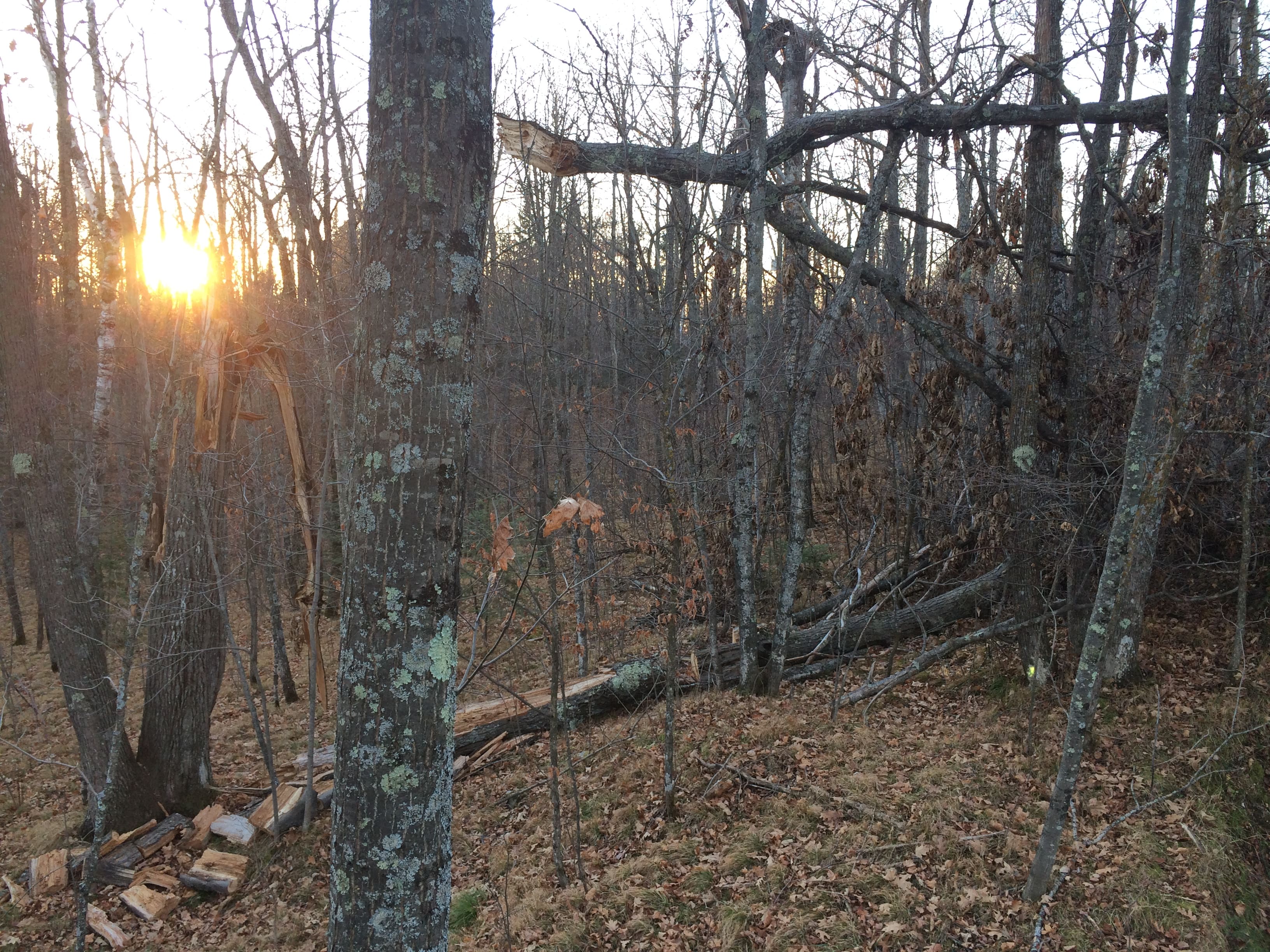
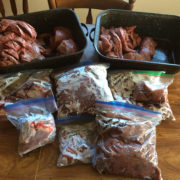
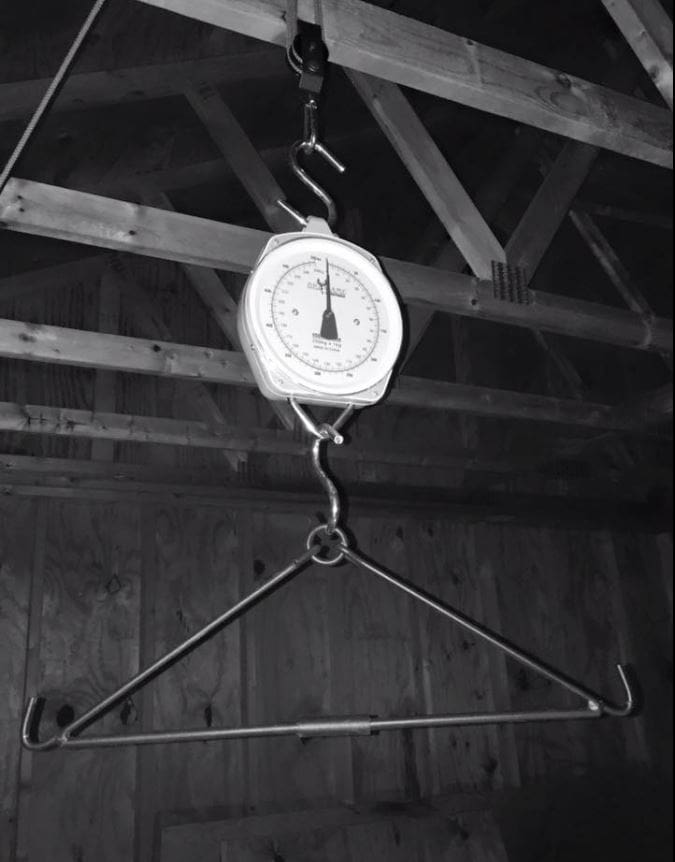
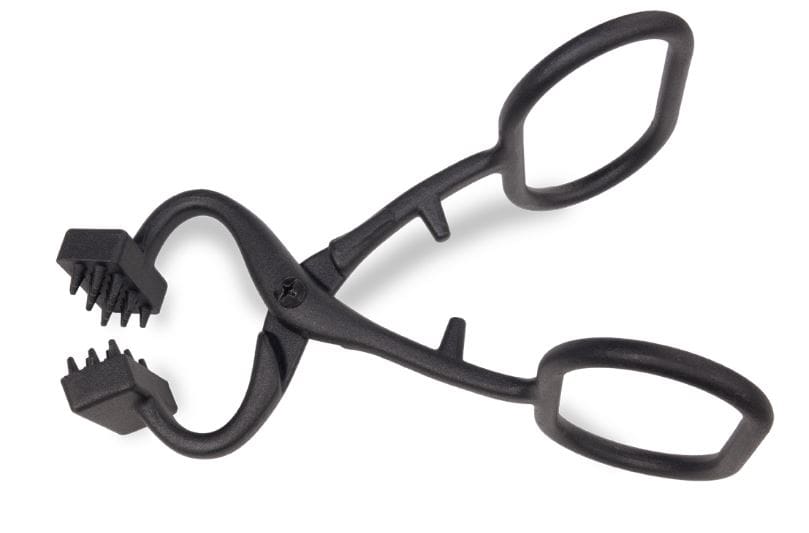
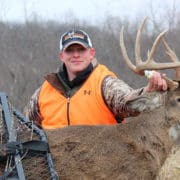
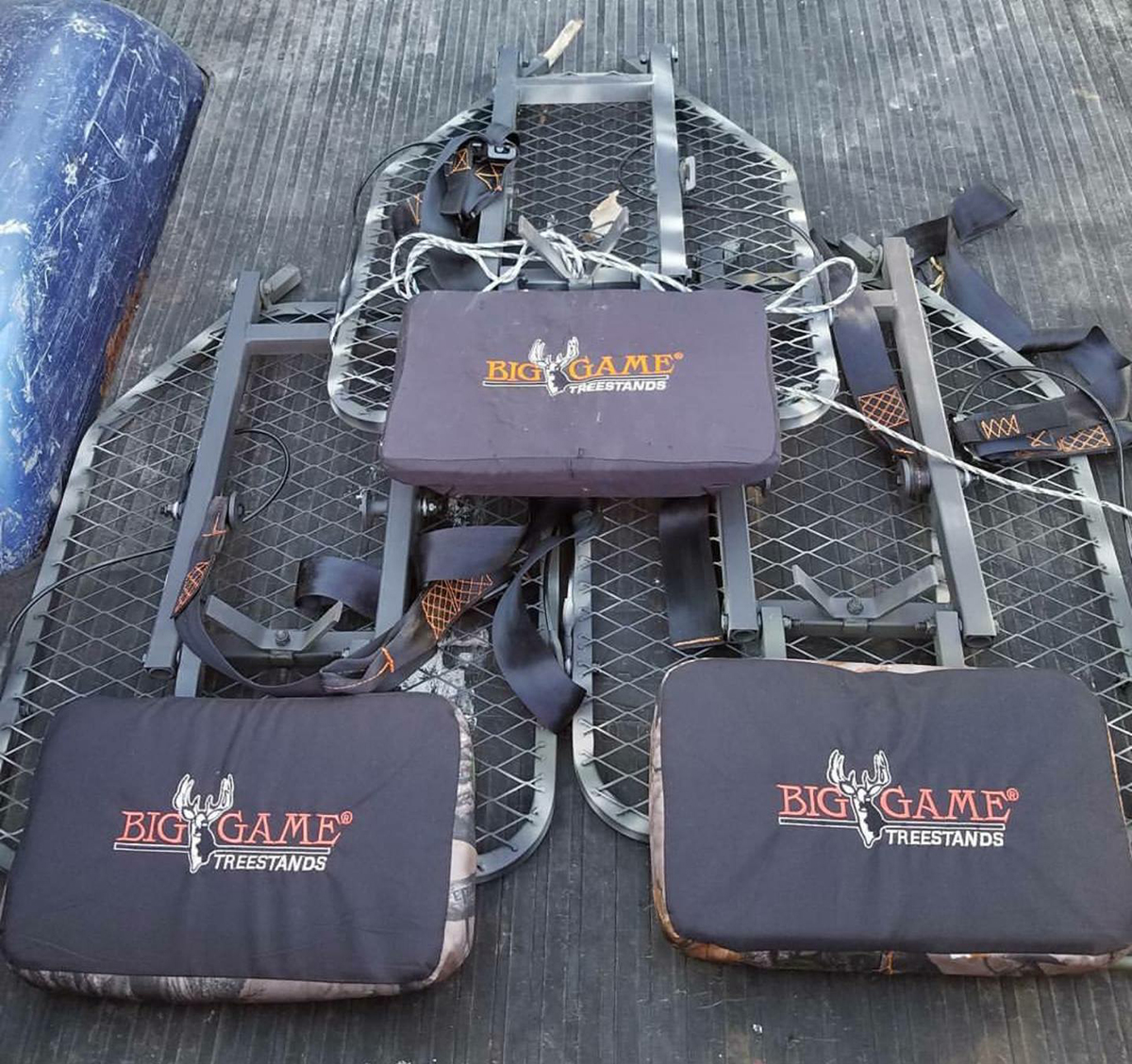
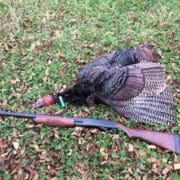
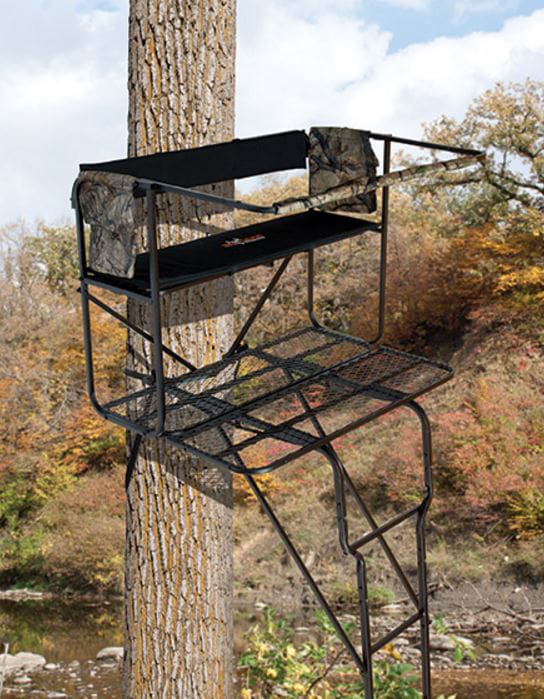
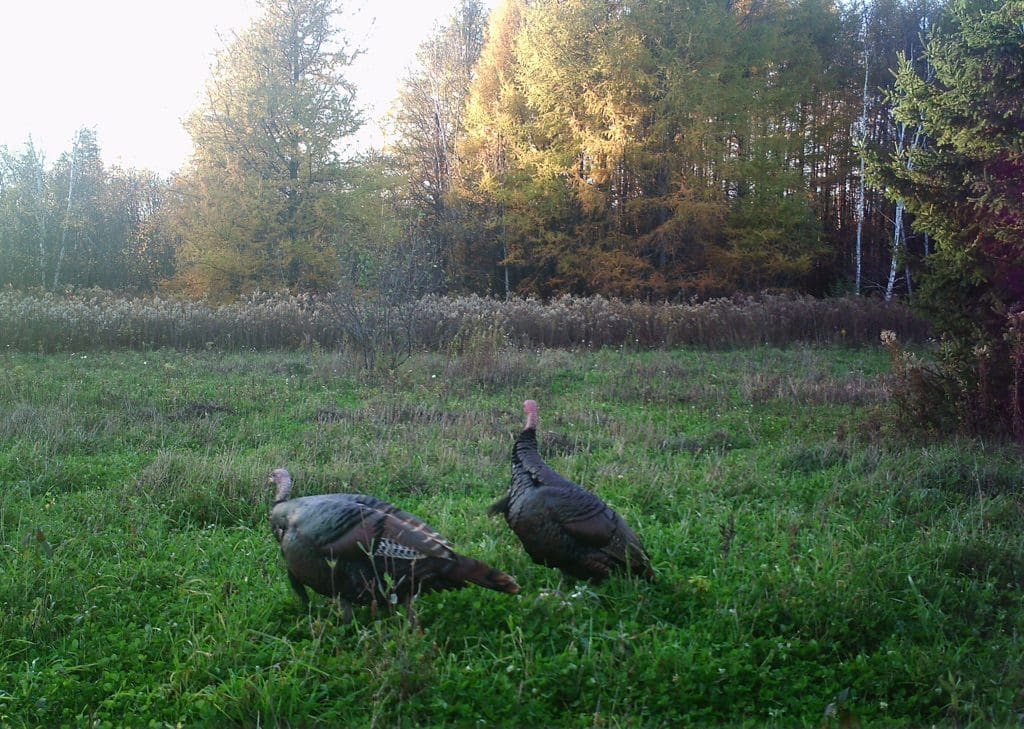

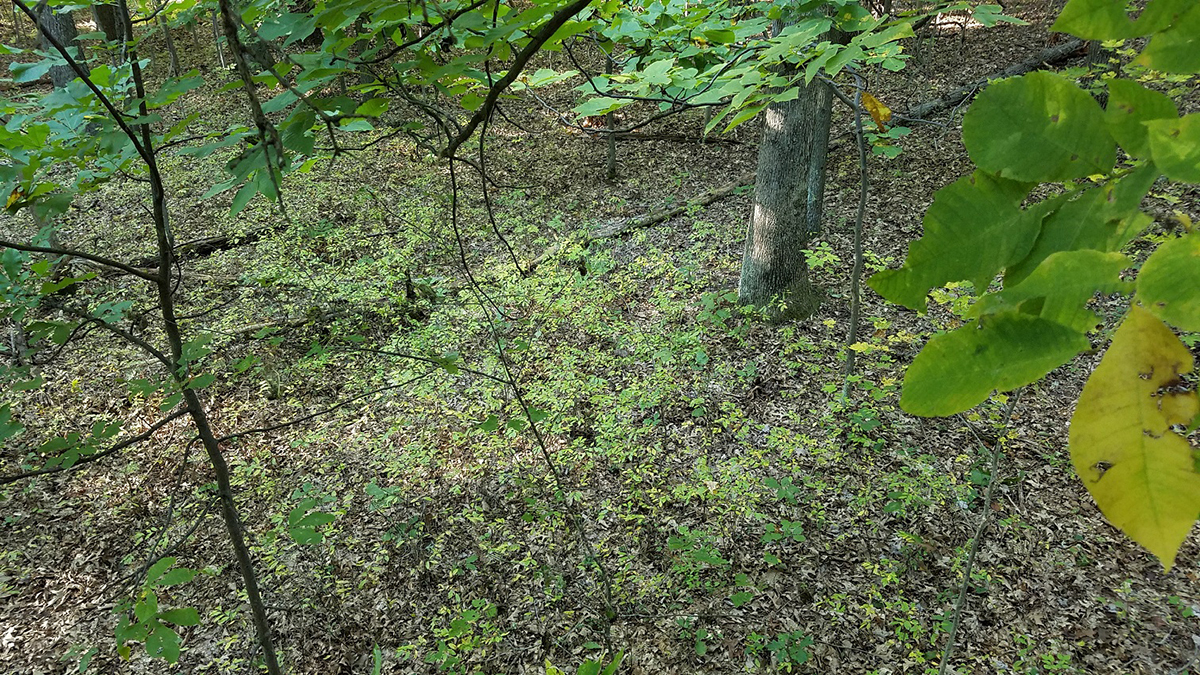
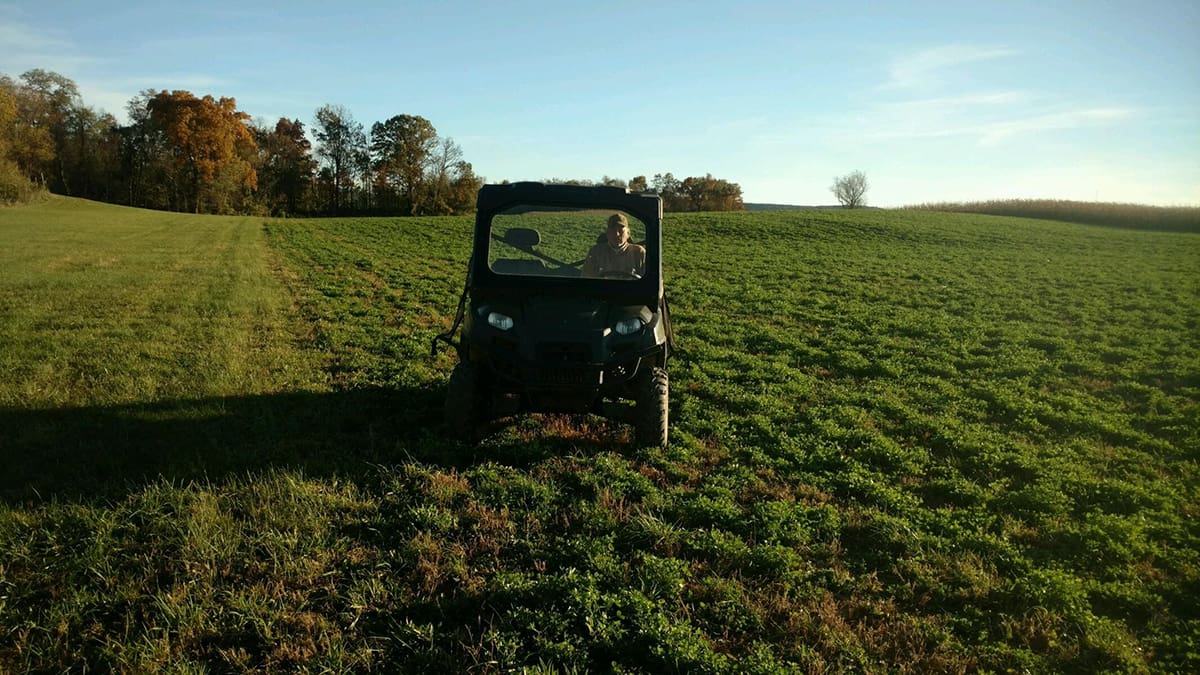
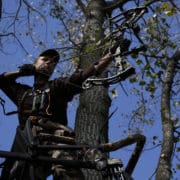
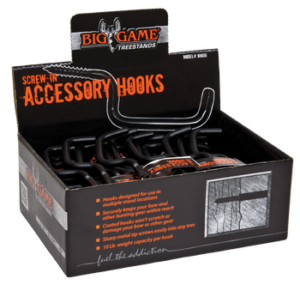
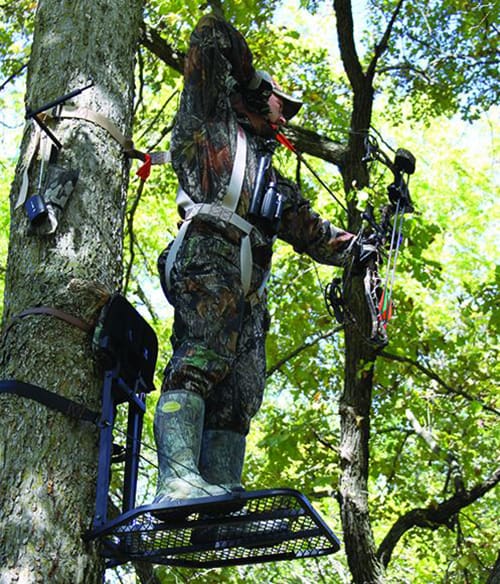
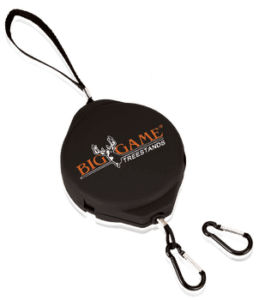
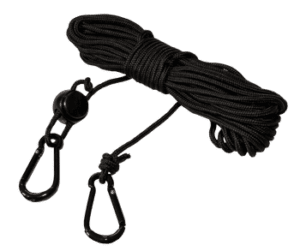
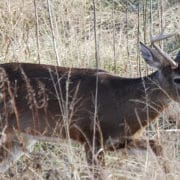
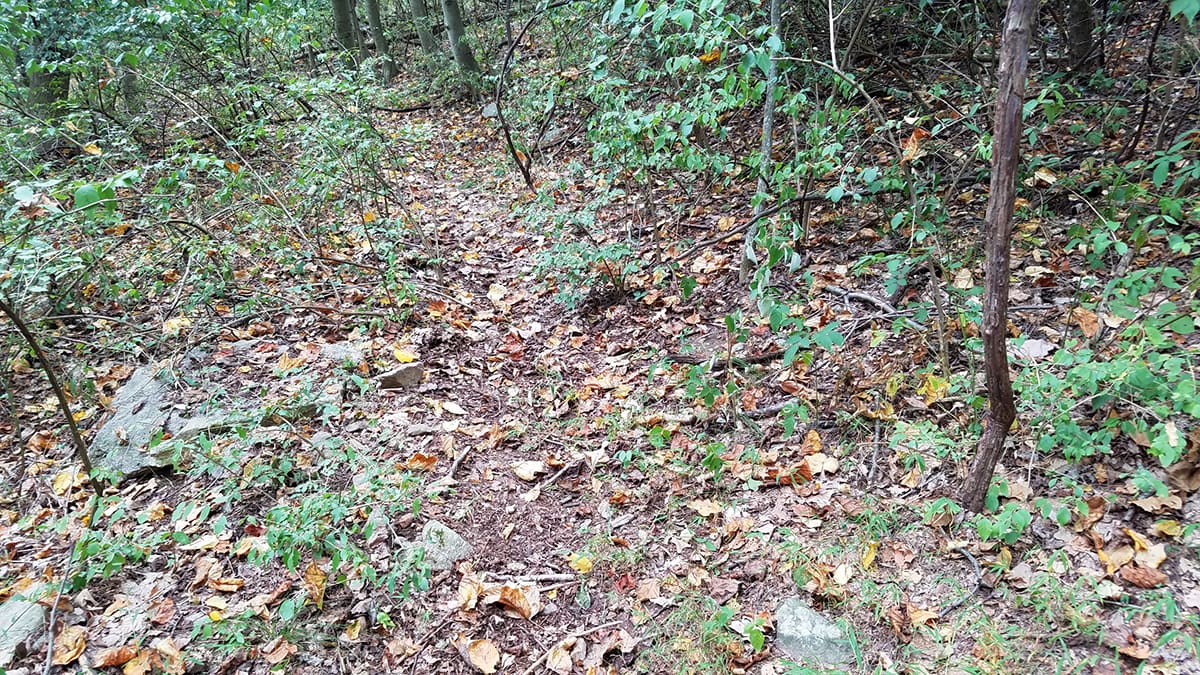
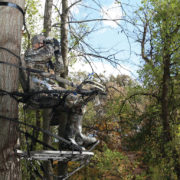
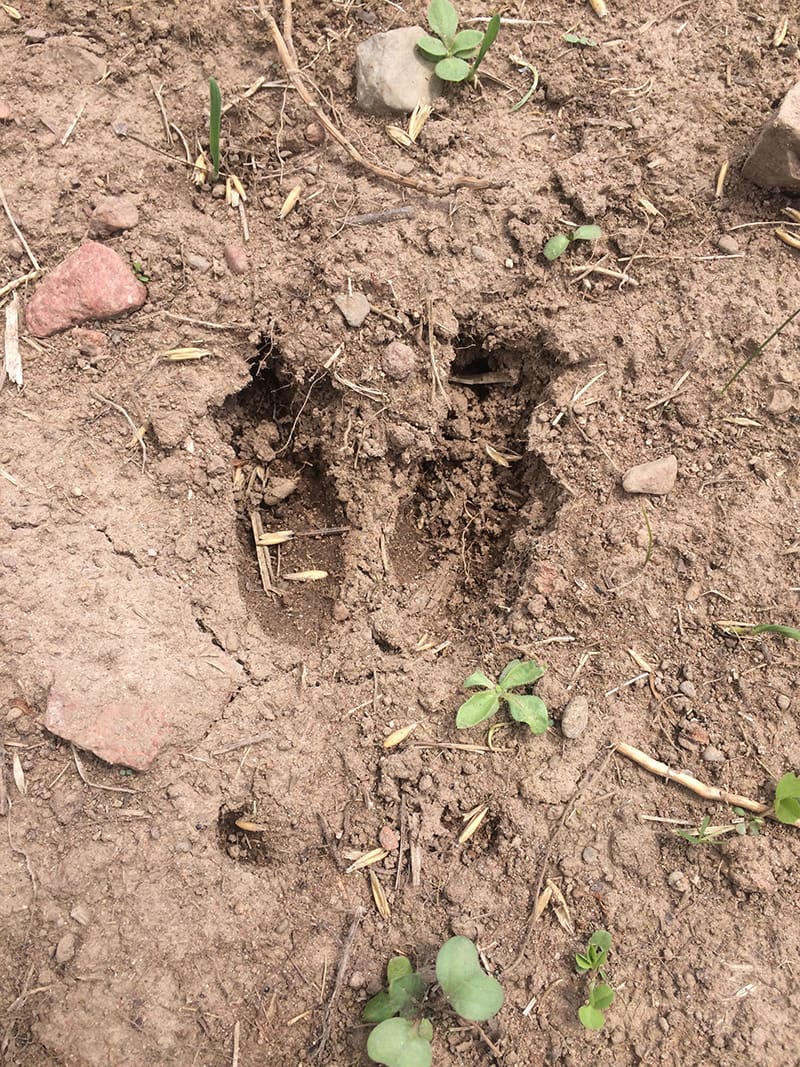 If you’re hunting a farm field, there are probably hundreds of deer tracks covering the ground in every direction. As deer enter these fields, they mull around finding the best and most palatable forage. That could take them all across the field and back again, like hairy lawnmowers. It might seem like this kind of sign is useless for a hunter. Out in the middle of the field, it probably is.
If you’re hunting a farm field, there are probably hundreds of deer tracks covering the ground in every direction. As deer enter these fields, they mull around finding the best and most palatable forage. That could take them all across the field and back again, like hairy lawnmowers. It might seem like this kind of sign is useless for a hunter. Out in the middle of the field, it probably is.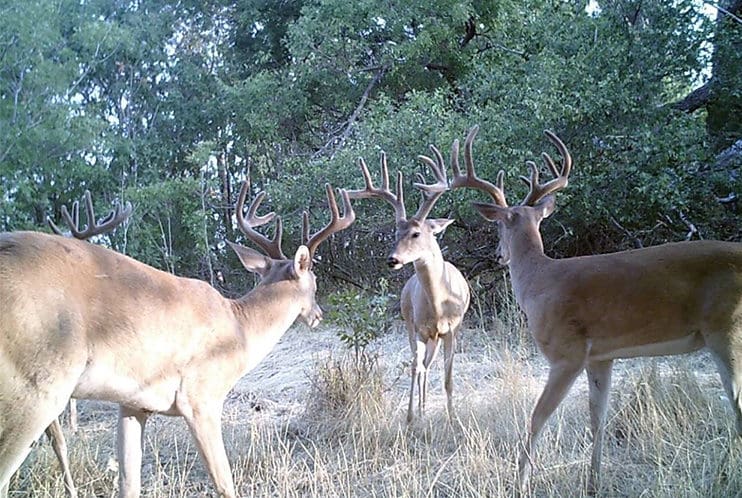 Every hunter’s favorite thing to find in the woods, rubs are a sure sign there is a buck in the area. They may be on finger-width sprouts or fence pole-sized trees, and the size of the tree does not necessarily correlate with the size of the animal. Though generally, larger bucks will be the only ones rubbing truly large trees. You can also estimate the size of the deer and it’s antlers by studying the rub a little more closely. For example, if there are deep gouges into the wood and the bark is frayed from one to four feet off the ground, the buck likely has a very strong neck, has a large body, and probably has sticker points that are cutting deep into the wood. Bucks tend to choose smooth or aromatic trees for rubbing, likely because it is easier and helps hold the buck’s scent a little longer. Such trees include aspens, maples, cedars, and pine.
Every hunter’s favorite thing to find in the woods, rubs are a sure sign there is a buck in the area. They may be on finger-width sprouts or fence pole-sized trees, and the size of the tree does not necessarily correlate with the size of the animal. Though generally, larger bucks will be the only ones rubbing truly large trees. You can also estimate the size of the deer and it’s antlers by studying the rub a little more closely. For example, if there are deep gouges into the wood and the bark is frayed from one to four feet off the ground, the buck likely has a very strong neck, has a large body, and probably has sticker points that are cutting deep into the wood. Bucks tend to choose smooth or aromatic trees for rubbing, likely because it is easier and helps hold the buck’s scent a little longer. Such trees include aspens, maples, cedars, and pine.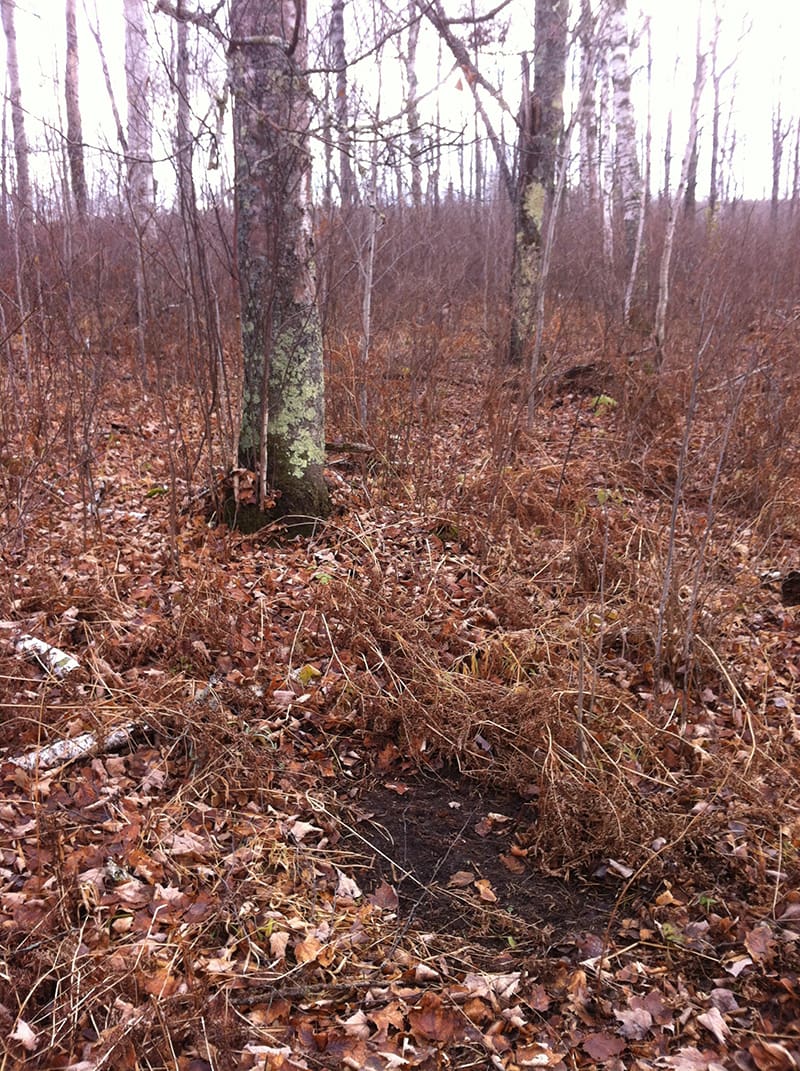 Deer use scrapes like we use a bulletin board or online forum. It’s a way for animals to keep in touch about who is in the area, when they were there last, and when they are receptive to breed. Bucks use them to mark territories once the rut starts, to a degree, but they also use them for establishing a social hierarchy early in the season. As far as how to find deer scrapes in the early season, look along habitat edges (i.e., where field meets forest, where swamp meets thicket, etc.). Deer like to use habitat edges anyway, and so it’s a natural spot for a scrape to act as a message board.
Deer use scrapes like we use a bulletin board or online forum. It’s a way for animals to keep in touch about who is in the area, when they were there last, and when they are receptive to breed. Bucks use them to mark territories once the rut starts, to a degree, but they also use them for establishing a social hierarchy early in the season. As far as how to find deer scrapes in the early season, look along habitat edges (i.e., where field meets forest, where swamp meets thicket, etc.). Deer like to use habitat edges anyway, and so it’s a natural spot for a scrape to act as a message board.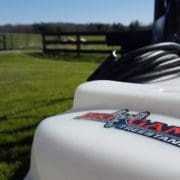
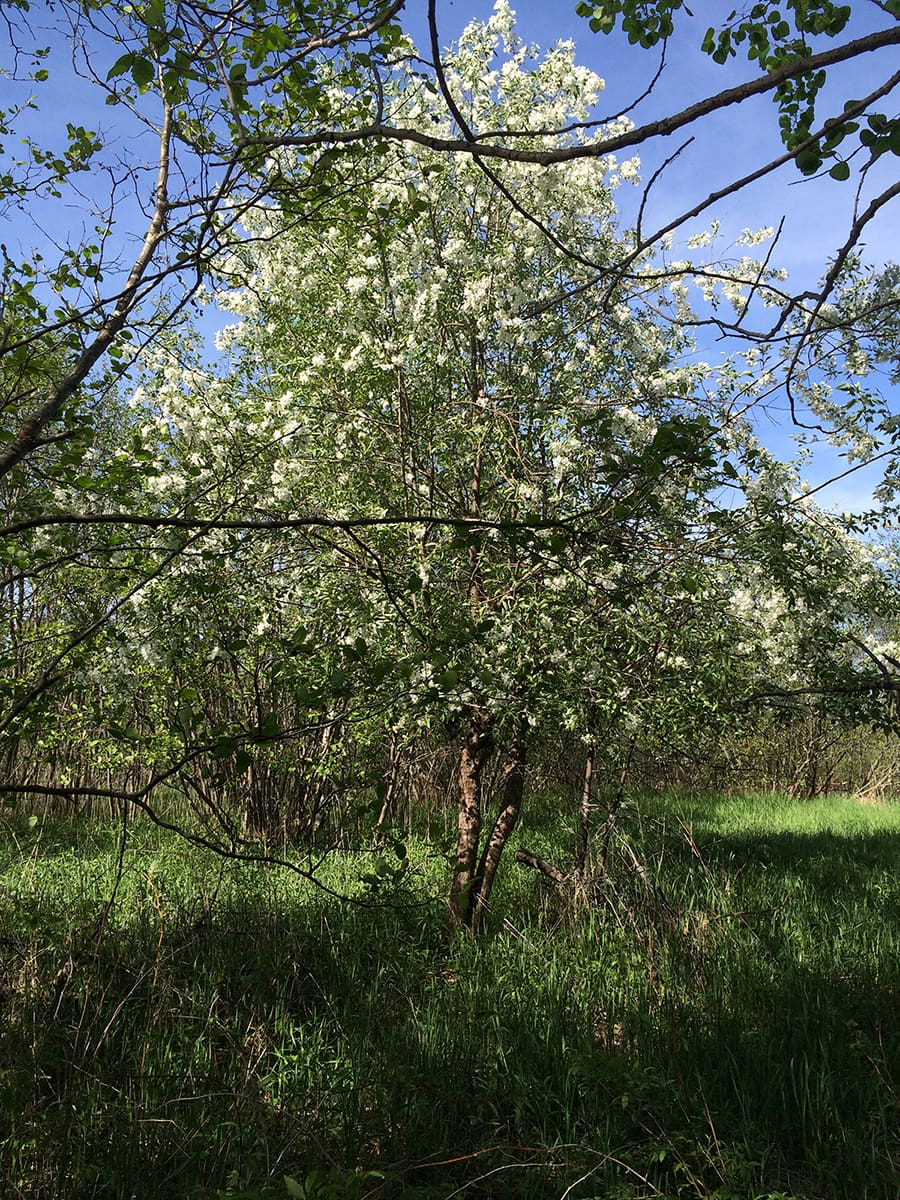 If your private property has a lot of old fields or native prairie remnants, burning is a very good practice. Many prairie communities evolved with natural fires, so they actually require an occasional fire to recycle nutrients, reduce the mass of organic material, remove woody species from taking over, and encourage tender new growth to sprout. Again, this is another practice you should do only with professional help unless you’re experienced in doing it, as it can quickly get out of hand and do a lot of damage. Prescribed burns, no matter how small, can do a lot of good at regenerating native species and providing lush new food for animals.
If your private property has a lot of old fields or native prairie remnants, burning is a very good practice. Many prairie communities evolved with natural fires, so they actually require an occasional fire to recycle nutrients, reduce the mass of organic material, remove woody species from taking over, and encourage tender new growth to sprout. Again, this is another practice you should do only with professional help unless you’re experienced in doing it, as it can quickly get out of hand and do a lot of damage. Prescribed burns, no matter how small, can do a lot of good at regenerating native species and providing lush new food for animals.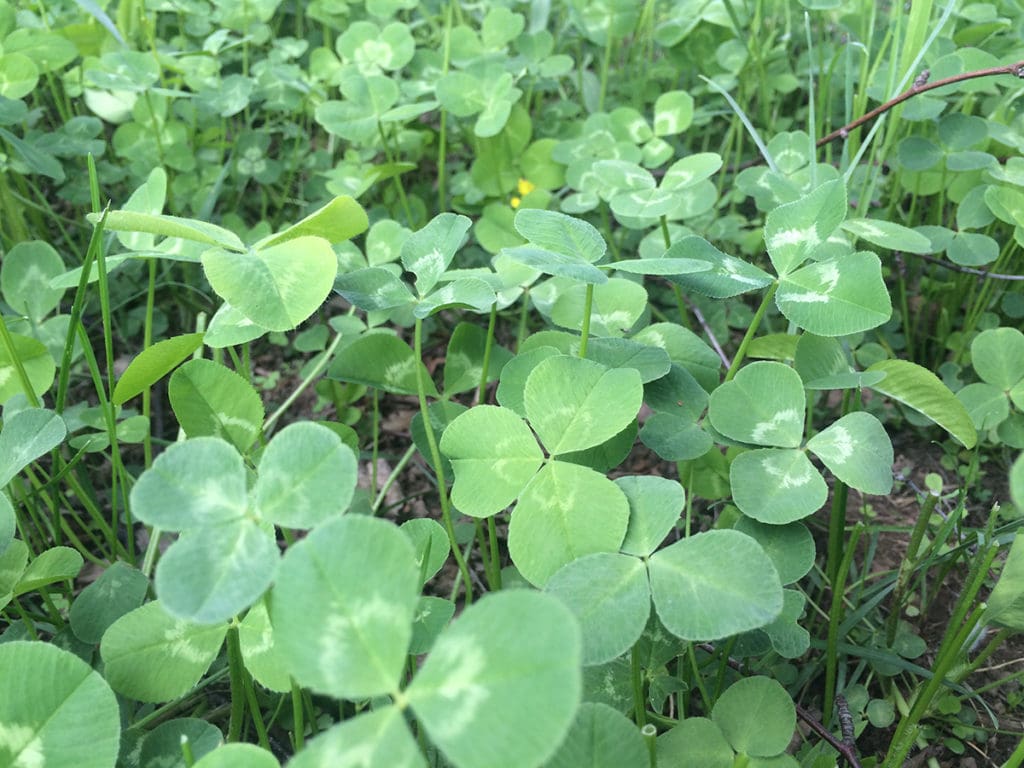 While you can divide up food plot types in several ways, we’ll classify them as either feeding or hunting food plots in this article because they have very different outcomes. A strictly feeding food plot is meant to provide calories to the deer herd in an unpressured environment. Corn/bean fields and hay fields act as feeding plots from spring through summer. Private landowners often plant clover as a perennial food plot, which help nursing does and antler-growing bucks during the summer. Some people even plant fall food plots strictly to help deer through the winter and never hunt them. These plots are useful for building the resident deer herd on your property, and are amazing when used in or near a deer sanctuary area.
While you can divide up food plot types in several ways, we’ll classify them as either feeding or hunting food plots in this article because they have very different outcomes. A strictly feeding food plot is meant to provide calories to the deer herd in an unpressured environment. Corn/bean fields and hay fields act as feeding plots from spring through summer. Private landowners often plant clover as a perennial food plot, which help nursing does and antler-growing bucks during the summer. Some people even plant fall food plots strictly to help deer through the winter and never hunt them. These plots are useful for building the resident deer herd on your property, and are amazing when used in or near a deer sanctuary area.